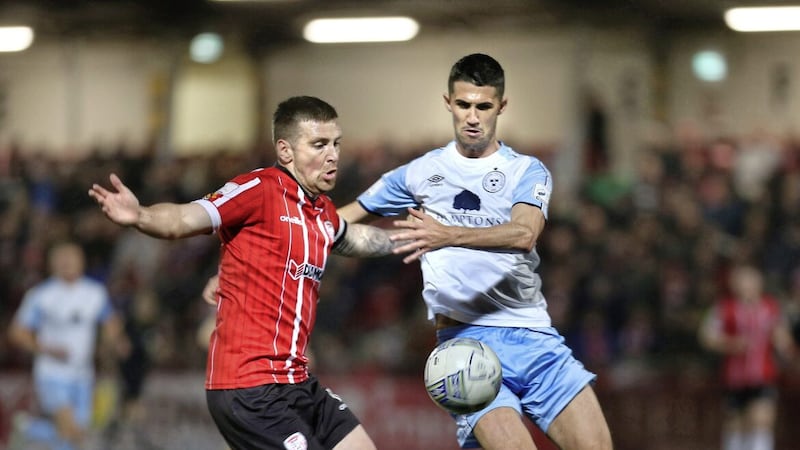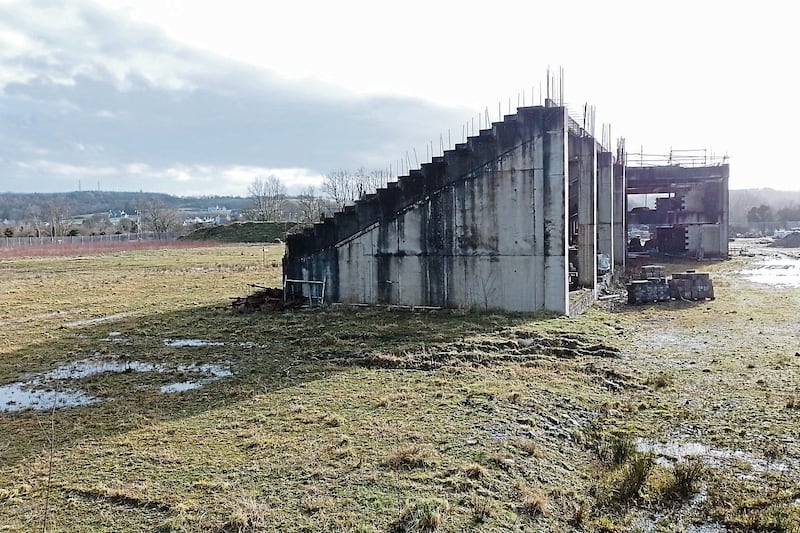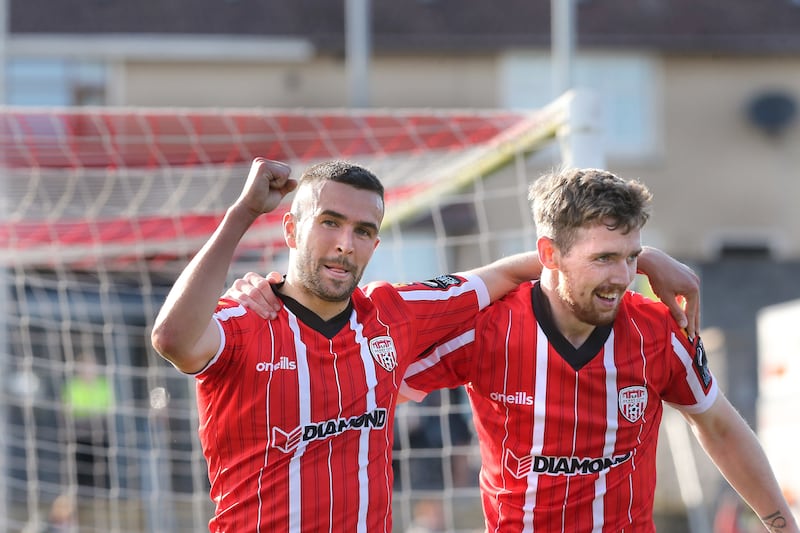There has been virtually no work carried out at Harps' proposed new ground over the past four years, but Paul McLoone, who is spearheading the stadium project development, insists that the door is not shut on the €7 stadium development plan in Stranorlar...
This month marks the 12th anniversary of the sod turning ceremony for Finn Harps’ proposed new stadium.
The new ground is in Stranorlar, less than a kilometre as the crow flies from the Donegal club’s creaking home of Finn Park in Ballybofey.
But so much water has flowed under the River Finn bridge that divides the so-called Twin Towns that there are a sizeable number of fans who doubt whether it will ever materialise.
There has been virtually no activity for the past four years, and apart from a concrete shell of a stand there is precious little to be upbeat about.
The saga has been going on for almost as long as the new Brandenburg Airport debacle in Berlin.
For those not familiar with the story, the super-efficiency of the German nation has taken a major blow.
After almost 15 years of planning, construction began in 2006.
It was originally planned to open in October 2011, but encountered a series of delays and cost overruns, and numerous projected opening dates were postponed.
Now, despite the coronavirus pandemic, the authorities are saying that it will finally open this October.
On the surface of things the coronavirus outbreak would appear to be the last thing Harps need in terms of their desire to get a new ground.
At the moment, the club is very much in survival mode. Indeed there is little talk about the stadium.
However, behind the scenes, work has been continuing and Paul McLoone, who is spearheading the stadium project development at the club, remains upbeat that it will happen.
Indeed, he stresses that this is exactly the sort of project that the local economy will need post-Covid-19 times. It would immediately provide employment and there would be a ripple effect among those in the supply chain.
With talks about the formation of a new coalition government in the Republic likely to intensify over the coming days, McLoone points out that ultimately any decision on the Harps project will be a political one.
But he insists that “active discussions” are on-going with the Republic’s Department of Sport.
“No time has been lost due to the lock-down,” he says, noting that Harps have been providing answers to various questions and submitting documentation to the Strategic Analysis and Research Division of the department.
“The door has not been closed,” he stresses.
Nevertheless, progress has been painfully slow. Plans for a new ground were first hatched more than 15 years ago, and planning approval came in 2007.
Countless delays followed, not helped by the Celtic Tiger collapse, legal issues, and a mountain of bureaucracy.
New ground developments are somewhat of a rarity in the League of Ireland. Limerick, for example, had plans to develop a 25,000 capacity stadium back in 1984.
Nothing came of it, clubs in the city folded and re-emerged in different guises, and the sorry tale is still not resolved at the redeveloped Market’s Field ground in the city which is currently without a team in the League of Ireland.
Shamrock Rovers were nomads for more than 20 years after losing their Milltown home and before they moved into their present home in Tallaght.
Cork City were plunged into a financial crisis at the time of their move to a new Bishopstown ground.
Shelbourne and Bohemians have both had plans to modernise their old stadiums. Encouragingly, the path being pursued is for a ground sharing option at a redeveloped Dalymount Park.
Like so many other clubs, Finn Harps’ immediate priority is to remain in business, and huge challenges lie ahead.
But McLoone remains positive that the go-ahead can be given for the €7 million (seven million euro) first phase.
“It fits all the criteria,” he states, pointing out that the Donegal Stadium - as it will be known - would also be used for underage and women’s soccer.
Air traffic control in Berlin may soon be giving clearance for take-off, and while Harps are still watching the “delayed” reading on the departures’ monitor, the hope is that the colour will change to green and that they can proceed.
It would be just the tonic for the Donegal club and could kick start a new era.








